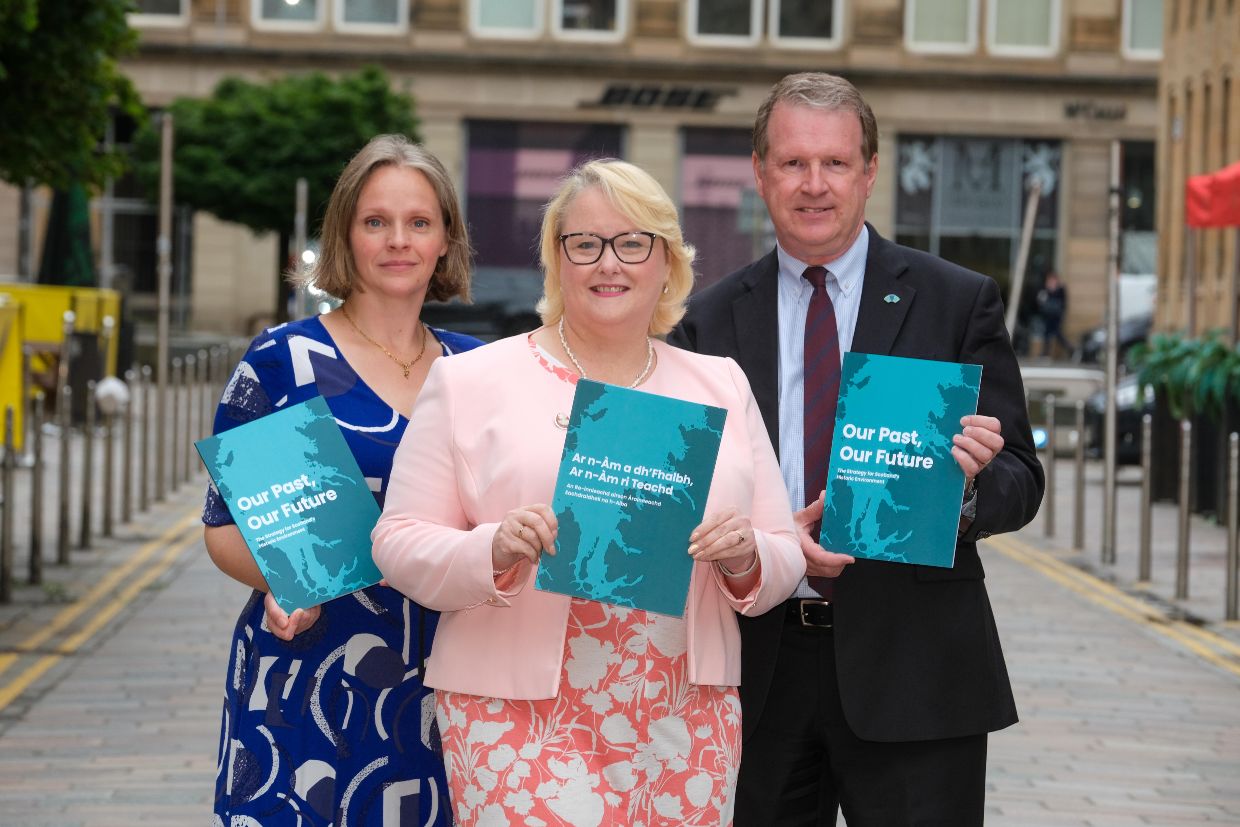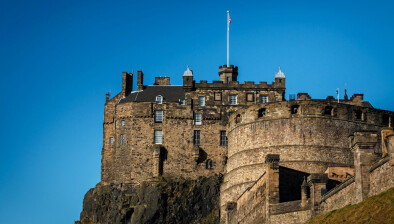Minister unveils new strategy for future of Scotland’s historic environment

(from left) Ailsa Macfarlane, director for Built Environment Scotland; culture minister Christina McKelvie and Alex Paterson, CEO of Historic Environment Scotland
The transition to net zero, resilient communities and places, and the wellbeing economy are at the heart of the new five-year strategy for Scotland’s historic environment sector.
Launched by Christina McKelvie, minister for culture, Europe and international development, and led by Historic Environment Scotland, Our Past, Our Future, was created following a public consultation, in collaboration with 10 organisations representing Scotland’s heritage sector including the Scottish Government, to create a new national strategy for those working in the public sector and beyond.
The strategy, which builds on the previous strategy ‘Our Place in Time’, is intended to provide a roadmap for the next five years and highlights the sector’s shared ambition to make a responsible contribution to Scotland’s economy and use the historic environment to improve people’s wellbeing. It also has a strong focus on the transition to net zero alongside a forward-looking ambition to empower communities and build a wellbeing economy.
Scotland’s historic environment plays a key role in the country’s economy, sustaining 68,000 full-time equivalent jobs and generating £4.4 billion per year pre-COVID pandemic. These numbers are expected to increase by an estimated 10,000 new jobs over the next decade to maintain and adapt Scotland’s traditional building stock.
The strategy also sets out the goal of further retrofitting and putting Scotland’s traditional buildings back into use; estimates put these buildings at representing 19% of Scotland’s housing stock, 33% of retail space, and almost 50% of spaces used by the public sector.
Yesterday’s launch event was held in Citation in Glasgow, a B-listed former courthouse built in 1844 which is now in re-use.
Culture minister Christina McKelvie said: “I am pleased that this refreshed strategy has been designed in partnership between the historic environment and cross-cutting sectors to face the fresh challenges around how we care for our historic environment.
“Our Past, Our Future identifies opportunities for change by working collaboratively to sustain and enhance our historic environment and built heritage.
“The key priorities identified in this national strategy also align with the Scottish Government’s goal of creating more empowered, resilient and inclusive communities as we work towards a wellbeing economy and delivering net zero by 2045.”
Alex Paterson, CEO of Historic Environment Scotland, said: “Scotland’s heritage is marked by its diversity. It’s where we work and live, it attracts visitors from around the world and shapes local and national sense of identities, however it also has a key role in areas such as the transition to net zero, supporting skills and jobs, and the wellbeing economy.
“Our Past, Our Future isn’t just a strategy for the heritage sector, it’s for everyone in Scotland, and it sets out a national roadmap to sustain and enhance the benefits of Scotland’s historic environment. By working together we can further enhance this contribution and proven impact to national priority areas.”
Ailsa Macfarlane, director of Built Environment Forum Scotland, added: “Our Past, Our Future demonstrates not only how and where the sector contributes today, but steers a course for the sector to be increasingly celebrated and valued as a contributor for the future, supporting skilled green jobs, the just transition to net zero, and with resilient places underpinning public wellbeing. This strategy advocates for the sector in all its diversity. BEFS looks forward to collaborating, ensuring policy influence and impact, for the sector’s future.”















